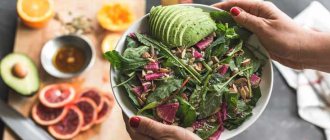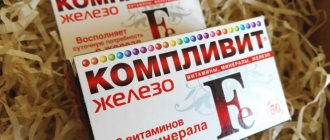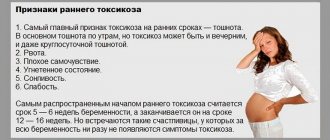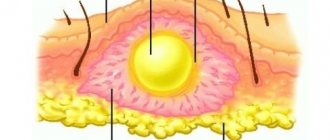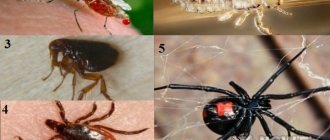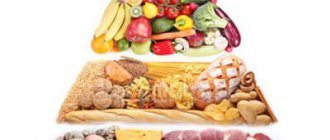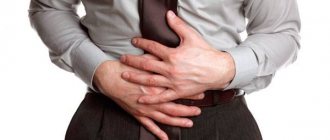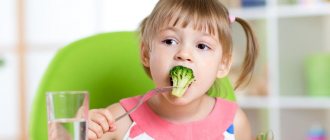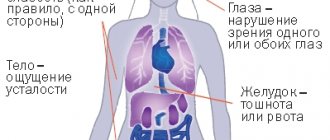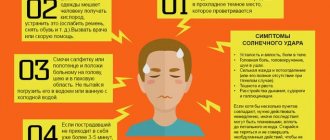From this article you will learn: what nutrition after a stroke speeds up recovery, what food groups are useful for patients who have suffered a cerebrovascular accident. Tips on proper nutrition that can help reduce the risk of stroke recurrence.
Author of the article: Nivelichuk Taras, head of the department of anesthesiology and intensive care, work experience 8 years. Higher education in the specialty “General Medicine”.
Article publication date: 08/11/2017
Article updated date: 02/09/2020
People who have had a stroke are at increased risk of poor nutrition, where their body does not get enough nutrients from food and drink. This may slow down their recovery. In case of a brain stroke, poor nutrition can be caused by:
- Problems with swallowing (dysphagia).
- Problems with arm and hand movements (for example, the patient has difficulty using a knife and fork).
- Problems with memory and thinking (for example, patients may forget to eat).
- Decreased appetite or lack of hunger.
Dysphagia – disturbances in swallowing
Diet after a stroke has several goals:
- Improving patient recovery after stroke.
- Preventing the development of recurrent stroke.
- Ensuring the supply of nutrients to the body in case of disorders of swallowing and consciousness.
In combination with other lifestyle changes, diet is a very important component of rehabilitation after a stroke and the prevention of the development of recurrent cerebrovascular accident.
Neurologists and nutritionists deal with the issue of proper nutrition for patients after a stroke.
Improving patient recovery after stroke through nutrition
Many scientists quite reasonably believe that proper nutrition can increase the effectiveness of rehabilitation after a stroke. This opinion is based on the results of scientific studies demonstrating the presence of metabolic changes in the brain after acute ischemia and the effectiveness of special nutrition in reducing disturbances in its functioning.
During rehabilitation, patients need a diet that ensures an adequate supply of essential nutrients and avoids the predominance of catabolic processes (that is, processes during which the body's own reserves are used as an energy source). A complete and balanced diet based on vegetables, fruits and whole grains meets these requirements.
Tube feeding
For administration through a probe, products and dishes are used that are first twisted in a meat grinder or in a blender bowl, and then they must be passed through a sieve so that solid particles do not get in. The resulting puree is diluted to the consistency of cream with a decoction of vegetables or juice. Hot food can burn the mucous membrane, and cold food has difficulty passing through the probe. Therefore, the temperature is adjusted to 45 degrees. Feeding frequency – 5 or 6 times a day, solid volume – 300 g.
For food you can use:
- puree soup of vegetables and cereals with a spoon of sour cream;
- meat and fish puree from low-fat varieties;
- cereal flour porridge with butter (10 - 15 g);
- milk soup;
- fermented milk drinks;
- pureed cottage cheese with kefir or yogurt;
- steam omelette;
- vegetable purees from zucchini, carrots, cauliflower and pumpkin, beets, less often potatoes and young peas;
- fruits and berries in the form of homogeneous puree or juice;
- rosehip drinks, dried fruit compote.
Menu for the tube diet for the day:
- Milk porridge made from cereal flakes.
- Baked apple.
- Buckwheat soup, chicken and carrot puree.
- Cottage cheese with yogurt.
- Rice soup with pike perch puree.
- Kefir.
For ease of preparation, you can use baby food in the form of canned vegetables, meat and fish and dry milk and cereal mixtures. In intensive care units, special nutritional mixtures are used.
Healthy foods for stroke survivors
The patient's menu after a stroke should include the following product groups:
- Grain products, of which at least half must be whole grains.
- Vegetables. It is better to choose nutrient-rich dark green and orange vegetables, and you should regularly consume legumes and peas.
- Fruits. You should eat a variety of fresh, frozen or dried fruits every day.
- Dairy products. You should choose low-fat dairy products or non-dairy products rich in calcium.
- Protein. You can eat lean or lean meat and poultry. Don't forget about a variety of beans, nuts and fish, which are also excellent sources of protein.
- Fats. Most fats should come from fish, nuts and vegetable oils. It is necessary to limit the consumption of butter, margarine and lard.
Main sources of fat in the diet for stroke
Principles of diet for acute disorders of blood supply to the brain
On the first day after a stroke, the total calorie intake should not exceed 1500 kcal. Gradually, this figure can be increased to 2500 kcal, gradually introducing new products that promote the regeneration of affected brain cells. When planning a patient’s menu, you need to calculate the BJU (proteins, fats and carbohydrates) that will be in the daily diet. The distribution should be as follows:
- Protein should be no more than 90 g. It should be obtained from lean meat: chicken breast, turkey and rabbit.
- There should be no more than 50 g of fat. Preference should be given to fats of vegetable origin.
- Carbohydrates should be at least 400 g. About 85% of carbohydrates consumed should be complex.
During the day, the patient should have at least 5-6 meals. This mode is called fractional meals. It helps reduce stress on the body, restore the digestion process and prevent overeating.
The temperature of food affects how it is absorbed by the body. Therefore, the food consumed by the patient should not be too hot or too cold. The optimal temperature is 36-39 degrees.
The food that the patient consumes must be crushed. This is important because after a stroke, paralysis of the facial muscles can occur, which makes chewing very difficult. Chopped foods and a fractional nutrition system will help speed up the digestion process, and the patient will not experience discomfort.
Heat treatment of products should last at least 40-45 minutes. You should avoid frying and steam food instead. This will help avoid excess fat content in prepared foods.
Ten Diet Strategies to Reduce the Risk of Stroke Recurrence
Eat a variety of foods every day
No single product can provide the body with all the necessary nutrients on its own, so you need to eat a variety of foods every day.
Eat foods that are brightly colored
To ensure your body receives beneficial nutrients, it is important to eat a variety of foods with bright colors at each meal. You can provide your body with a wide range of nutrients by choosing bright yellow, dark red, orange, dark green, blue and purple fruits, vegetables and beans.
Eat 5 or more servings of fruits and vegetables every day
Research has shown that the best way to reap the benefits of a healthy diet is to add more fruits and vegetables to your diet. Therefore, eat at least 5 servings of these foods every day.
Read food labels
Food labels let you know more about the food you buy and eat. When choosing foods, check the label for calories, total fat, saturated fat, trans fat, cholesterol, sodium and fiber.
Limit cholesterol, saturated and trans fats
Cholesterol is a fatty substance produced in the human body and is essential for maintaining healthy cells. However, its increase in the blood can increase the risk of stroke and heart disease. This increase may be a consequence of two components - the amount of cholesterol produced in the body and the amount of cholesterol it receives from food.
A diet high in saturated fat causes high blood cholesterol and increases the risk of cardiovascular problems. They are found in animal products and some vegetable oils (palm, coconut). Limiting your intake of these foods is very important to prevent stroke.
Foods rich in cholesterol
To limit your intake of saturated fat, make the substitutions shown in the table below:
| Product with saturated fat | Alternative |
| Oil | Low-fat or diet margarine |
| Regular cheese | Low-fat or low-fat cheese |
| Whole or fat milk | Skim or 1% milk |
| Regular ice cream | Low-fat or low-fat yogurt |
| Fat cottage cheese | Low-fat or 1% cottage cheese |
| Mayonnaise | Low-fat or diet mayonnaise |
| Fatty meat for chops | Lean tenderloin |
| Chicken meat with skin | Chicken meat without skin |
| Eggs | Egg whites |
A diet rich in trans fats also increases blood cholesterol and increases cardiovascular risk. They are formed when unsaturated vegetable oils are converted into more saturated forms through the process of hydrogenation. Products containing hydrogenated vegetable oils should be avoided.
Trans fats are found in:
- products containing partially hydrogenated oils (cookies, crackers, fried snacks and baked goods);
- hard margarine;
- most fried foods;
- fast food and semi-finished industrial products.
Diet during a stroke should contain a limited amount of cholesterol, which is another important step in preventing recurrent cerebrovascular accident. This can be achieved by:
- Removing fat from meat and skinning poultry.
- Limit the frequency of consumption of meat, poultry and other animal products.
- Reducing the portion of meat to 100 g.
- Limit the consumption of oil and lard.
- Consuming low-fat or low-fat dairy products.
Limit the amount of sodium in your diet
Many people consume more sodium than necessary. This can cause fluid retention in the body and increase blood pressure. One way to reduce sodium in your diet is to avoid adding salt to your table foods. But this may not be enough.
You can also reduce your sodium intake by the following methods:
- Replace salt with herbs and spices. Salt is one of the main sources of sodium in the diet. You can use herbs and spices instead. Avoid mixed seasonings, which may include salt.
- Eat less processed and canned foods, which may contain sodium, both to add flavor and to preserve it.
- Choose fresh foods that do not contain salt.
- When purchasing food products, check the label to see how much salt or sodium they contain.
- Familiarize yourself with the composition of medications. Sodium can be part of many of them.
Most doctors advise stroke patients to limit their sodium intake to 2000 mg per day in the early days. However, people with high blood pressure are advised not to consume more than 1500 mg daily.
Eat foods high in dietary fiber
Part of a healthy diet that can lower blood cholesterol and reduce cardiovascular risk is dietary fiber. This part of plant food is not absorbed in the body. Fiber, passing through the digestive tract, affects the digestion of food and absorption of nutrients. The amount of its consumption affects not only cholesterol levels and cardiovascular risk, but also has other beneficial properties: it helps control blood glucose levels, promotes regular bowel movements, prevents diseases of the digestive tract and helps normalize weight.
To increase the amount of dietary fiber in your diet:
- Start your day with whole grain porridge or whole grain toast.
- Eat a whole fruit instead of fruit juice.
- Add ½ cup chickpeas to a dark leafy vegetable salad.
- Instead of white flour baked goods, buy whole grains.
- Buy whole grain pasta and brown rice.
- Add fresh fruits or nuts to yogurt or cottage cheese.
- For a snack, use fruits or vegetables.
Adequate dietary fiber also prevents blood glucose levels from fluctuating throughout the day. It will also help you feel fuller and may prevent sudden cravings for sweets—which improves weight control.
Whole grain porridge
Achieving and maintaining a normal weight
Another important strategy for reducing the risk of stroke recurrence is weight management. Control your portion sizes, eat foods high in fiber and low in fat, and increase your level of physical activity - all of these measures will help you achieve a normal weight if you are overweight. Remember that losing weight doesn't happen overnight, so set realistic short- and long-term goals from the start.
Reduce your intake of simple carbohydrates
Excessive consumption of simple carbohydrates can cause hypertension, obesity, type 2 diabetes mellitus and lipid metabolism disorders. All of these factors increase the risk of stroke recurrence.
Simple carbohydrates are found in sugar, honey, jelly, jam, sweet drinks and confectionery.
Get enough potassium
Adequate dietary intake of potassium is essential to maintain normal heart function. Most adults don't get enough potassium, which is found in fruits, vegetables and dairy products. If you eat enough foods from these groups, your body will receive the required amount of potassium.
Menu in the first days
In the first week after a stroke, patients should be on a gentle diet; they receive all meals in a semi-liquid state. To create a diet you can use:
- vegetable soups with cereals;
- meat or fish puree, then steamed meatballs;
- yogurt or kefir, cottage cheese (preferably homemade);
- steam egg white omelette;
- pureed porridge from buckwheat and oatmeal;
- vegetables boiled, steamed or in water, chopped - carrots, zucchini, beets, potatoes (no more than 3 times a week);
- fruit puree, baked apples, bananas are healthy;
- drinks - decoction of dried fruits, rose hips, juices (freshly squeezed only) from carrots, beets, fruits and berries.
After 2 weeks, you can add 150 g of dried bread, serve soups with well-cooked vegetables and cereals. With normal swallowing and chewing of food, you can not chop the boiled fish, but prepare steamed cutlets or beef stroganoff with milk sauce from the meat.
The diet may include casseroles made from cottage cheese, cereals, with fruits or berries; mild cheese (50 g) is allowed. The porridges are not pureed, but they need to be cooked longer than usual. At this stage, carrots and beets are grated on a fine grater; tomatoes, lemons, stewed onions (a little), fresh herbs, and herbal seasonings without salt and pepper are used to add flavor.
| Sample menu for the day | |
| 8-00 breakfast | oatmeal porridge with prune and dried apricot puree, carrot juice |
| 11-00 second breakfast | cottage cheese casserole with pumpkin, plain yogurt |
| 14-00 lunch | carrot, zucchini and buckwheat soup, boiled cod with mashed potatoes, tomato juice |
| 16-00 afternoon tea | White omelette with grated cheese and herbs, chicory drink |
| 19-00 dinner | turkey meatballs with milk sauce, beet puree, apple and blackcurrant compote |
| 21-00 before bed | kefir with a teaspoon of bran (pre-soaked in boiling water for 15 minutes) |
Diet for diabetes
Features of the course of the disease
Due to extensive damage to the vascular walls of all types of arteries in diabetics, stroke occurs much more often. For the same reason, the rehabilitation process is longer and more difficult.
List of recommended and prohibited products
For stroke and diabetes, these products are allowed:
- lean meat and fish;
- seafood;
- cereals and legumes;
- vegetables and fruits;
- low-fat dairy products;
- herbal tea, juices, compote, jelly, chicory.
For stroke and diabetes, these products are prohibited:
- sugar, salt;
- alcohol;
- fatty, fried, salty;
- semolina, rice, potatoes;
- semi-finished products;
- Tea coffee;
- spinach, radish, mushrooms, sorrel;
- margarine, mayonnaise, store-bought sauces.
Sample recipes
While a loved one is undergoing treatment in a hospital after an ischemic stroke, you should prepare in advance for subsequent recovery from the illness at home. This is not only a comfortable bed, mobility aids (walkers, chair), but also care about proper nutrition.
First meal
Soups must be present in the diet of a patient after an ischemic stroke. It is recommended to cook with vegetable or weak meat (fish) broth.
The diet is wrong and right
A sedentary lifestyle and irrational, excess nutrition lead to obesity and increased blood cholesterol levels. The first factor increases the load on blood vessels and leads to the development of persistent hypertension, i.e., constantly high pressure in the vessels, the second factor contributes to the deposition of cholesterol on the walls of blood vessels in the form of plaques and the development of atherosclerosis. Therefore, the diet menu for cerebral stroke should be designed in such a way as to reduce the influence of damaging factors on the body, promote the restoration of lost functions and prevent the development of negative consequences of stroke and relapses.

